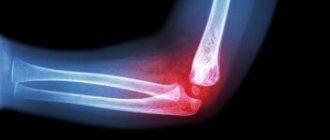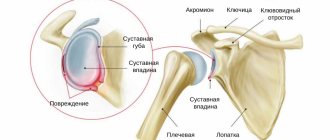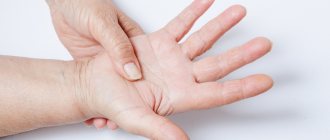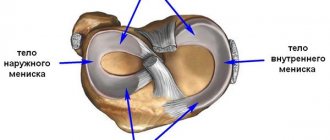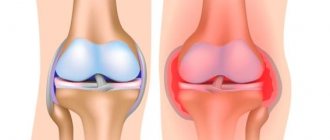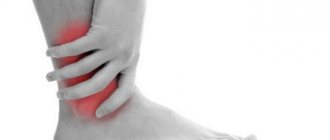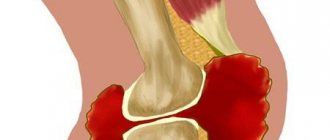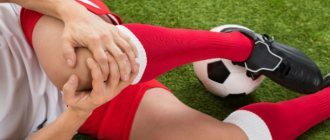Finger dislocation is a condition characterized by displacement of the phalanges of the fingers and loss of congruence between them. In this case, the asymmetry of the articular structures is clearly noticeable. Knuckle dislocations are more common on the hands than on the feet. This is due to the anatomical features of the structure of the phalanges of the fingers of the upper extremities.
During an injury, the ligaments that hold the bones and muscles are damaged, the joint capsule is also injured and the joint changes its shape. In the practice of modern traumatologists, dislocation of the thumb joint is more common. His bones are more prone to displacement and damage.
The little finger has weak muscles and ligaments, which explains its frequent injury during accidental falls and fights. The simultaneous dislocation of several fingers at once is not excluded, which significantly complicates immobilization and further treatment. In patients with weak ligaments or age-related changes, a finger can be dislocated even with a firm handshake.
Dislocated fingers are an indication for seeking help from a traumatologist. Make an appointment with a specialist as early as possible, since the main method of treating a dislocation is to realign the articular structures that are displaced relative to each other. Only a qualified doctor can carry out such a procedure, always in a medical institution.
At the CONSTANTA Clinic in Yaroslavl you can make an appointment with a traumatologist at any time. The doctor will conduct an examination, order an X-ray examination and provide all necessary medical care. As a rule, treatment for a dislocated finger is carried out on an outpatient basis, but in compliance with all medical recommendations and prescriptions.
Causes of dislocations
The main cause of thumb dislocation is exposure to force, which in its intensity is much stronger than the ability of the ligaments to stretch. Typically, this problem manifests itself as a result of very rapid flexion and extension of the fingers. Injury can also occur when falling on a straight arm or colliding with something hard.
Knuckle dislocations are noted when the knuckles come out. The risk group includes sports fans who prefer extreme sports. Non-professional risk groups include fights and falls. For boxing fans, this problem can occur even with protective equipment. Exercising at home significantly increases the risk of thumb dislocation.
In addition to boxing, provoking factors are:
- falling on the hand;
- diseases of the musculoskeletal system such as osteoporosis, osteomyelitis;
- pressing down the phalanx with a heavy object;
- pressing your finger against doors;
- excessive fragility of bone tissue.
The risk group also includes elderly patients, as well as patients with numerous hand injuries in their medical history. As soon as symptoms of a dislocated finger appear, you must urgently contact a traumatologist. Only a specialist will be able to determine the severity of damage to the phalanx. Only a doctor knows how to set a finger on a hand. A seemingly insignificant injury can provoke a number of complications.
The main reasons leading to finger dislocations
The causes of dislocated fingers are mainly traumatic. Falling with emphasis on the hand, unsuccessfully hitting the ball or awkward movement on sports equipment, trying to lift too much weight and it slipping, contact sports become the most common causes of such an injury. In addition, it is necessary to take into account the possible predisposition that can be caused by deforming diseases of the joints, previous injuries, even the habit of clicking the joints, pulling or pressing the fingers.
Symptoms
Symptoms of a dislocated finger are always pronounced. A person experiences external manifestations and extremely unpleasant sensations that bring discomfort. The pain is severe, which often becomes the root cause of traumatic shock. Signs of a dislocated finger will depend on the type of injury.
The following manifestations accompany a knocked out knuckle:
- tissue swelling and swelling;
- the appearance of hematoma, cyanosis, hemorrhage;
- muteness, feeling of goosebumps;
- throbbing pain of varying intensity;
- difficulty moving;
- partial preservation of ability to work;
- noticeable deformation;
- limitation of mobility.
After an injury, a person cannot move a finger, so absolutely any movement provokes severe pain and increased swelling. The injured area takes on a reddish tint. In this situation, the surrounding dermis acquires a pale tint. This occurs due to poor circulation. The dermis is hot to the touch and turns purple very quickly. A dislocated or sprained finger must be supervised by a specialist.
Dislocations of the proximal phalanges
Dislocation of the little, ring, middle and index fingers in the area of the proximal phalanges often occurs towards the back of the hand. At the same time, it is extremely difficult to move them - an attempt to move is met with springy resistance. When palpating the palm, the top of the metacarpal bone is felt, and on the back side the articular surface of the phalanx is felt.
If soft tissues get caught between the articular surfaces and are pinched, the dislocation is called irreducible.
Types of dislocations
A dislocation of the thumb on the hand can be observed towards the palm, in the opposite direction. In this case, various combinations of suspensory ligament rupture may occur. In most cases, there is a clear curvature, swelling and pain are noted.
Dislocations to the back
Injuries to the posterior side are noted due to hyperextension of the finger. Sometimes injuries are accompanied by a shift of the palmar structures into the joint. In cases of injury to the volar plate, x-rays will sometimes show a small fragment of bone separated from the middle phalanx.
A dislocation of the little finger on the hand is adjusted to the back by stretching the joint along the axis and applying force from the palmar side. If there is any suspicion of damage to the volar plate, or if closed reduction is not possible, then postcard reduction is more likely to be required.
Lateral dislocations
Lateral injuries can occur when an abductor or adductor force is applied to a finger extended at the joint. This type of injury causes severe pain and instability. The joint is reduced and then bypassed at an angle of 35 degrees.
Dislocation to the palmar side
Palmar injuries are usually rare and occur when force is applied to the rotated finger joint from the inside. Most often, there is a rupture of the central part of the extensor tendon, causing a bud-type curvature.
A dislocation on the palmar side is reduced using axial traction and force from the dorsal side, and then shunted within 7-14 days. As a result, patients should be evaluated to determine whether surgery is necessary to repair the torn central portion of the digital extensor tendon.
Reduction of dislocated fingers
If the dislocation is complicated by damage to the ligaments or joint capsule, surgery may be required.
As mentioned above, if a dislocation is accompanied by a fracture, surgery is necessary. During surgery, the fracture is fixed with knitting needles or screws or a miniplate.
A distraction device may be required to correct an old dislocation.
| Extensor tendons | To the list of articles | Metacarpal fracture |
First aid
Many people wonder what to do if a finger is dislocated. It is very important to provide first aid to the patient so as not to provoke complications and worsening of the condition. If a hand or finger is injured, a number of measures should be taken, and then urgently contact a traumatologist. It is very important to immobilize the limb and provide pain relief.
Once you recognize the symptoms of a dislocated finger, do the following:
- Provide complete rest to your hand. This will help not aggravate the situation and prevent inflammation.
- Apply a cold compress to the injured fingers to eliminate swelling and soreness.
- Place a cotton wool roll between the sore and healthy fingers.
- Rewind your finger, but try not to pinch it too hard.
- Be sure to use an analgesic. This could be Ketanov, Analgin, Nurofen.
- Be sure to go to the nearest emergency room.
Upon arrival at the medical facility, be sure to tell the doctor all the circumstances of the injury, the symptoms of a dislocated thumb, and all the sensations. The doctor will conduct a diagnosis and be able to make an accurate diagnosis. Only after this can competent treatment for dislocated fingers be prescribed.
First aid for injury
In order to alleviate the patient’s condition and avoid complications, the following rules must be followed:
- If there is a ring on the little finger, it must be removed, as swelling will appear in the future;
- The hand must be freed from constrictive clothing and kept in an elevated position.
- In order to straighten the joint, you need to seek help from a doctor, since attempts to correct the situation yourself can worsen it.
- In order to secure the little finger with a tight bandage, it must be secured to the ring finger.
- If there is damage to the skin, the wound should be washed with an antiseptic solution and bandaged with a sterile bandage or gauze.
- To reduce swelling and relieve pain, apply a cold compress or ice to the affected area. To prevent frostbite, it must be removed every 20 minutes.
- If necessary, you can also take a pain reliever based on ibuprofen, nimesulide or diclofenac.
You can adjust a dislocated little finger yourself only if there is no way to seek medical help in the next few hours. To do this, the injured person must place his hand on a flat surface, pressing his palm against it. With one hand you need to grab the end of the little finger, and with the other, squeeze the bone below the dislocation. Then you need to sharply and firmly pull the victim’s finger, while moving the joint into place.
Therapy methods
Only an experienced specialist will know what to do if a finger is dislocated and how to quickly deal with the problem. Reduction of dislocated joints is a rather painful procedure, so traumatologists perform this procedure only under anesthesia. Depending on the type of injury, the doctor treats the sore finger using different methods.
If the injury is uncomplicated, then the doctor can straighten a dislocated finger by gently pulling the end of the finger until a characteristic click occurs. At this moment the joint returns to its original position. To get rid of swelling and pain after this procedure, the patient is prescribed analgesic ointments such as Diclofenac, Dolobene and others.
If, during the procedure, the patient’s finger ligaments are torn or even simply sprained, then the specialist will refer the person for surgery. Intervention is also indicated if more than 7 days have passed since the shift, and there has been no competent solution to the problem. After the intervention, the surgeon applies a plaster cast for 2-4 weeks. This fixation ensures proper fusion of all ligaments and muscles.
If a person does not consult a doctor in a timely manner and does not straighten the dislocation of the middle finger, then a false finger joint occurs. In this case, intervention is also indicated and the specialist gives the previous shape not only to the finger bone, but also to the connecting articular apparatus. The specialist also prescribes a set of physiotherapeutic procedures. That is, if you promptly consult a doctor, treatment for a dislocated middle finger occurs as quickly as possible and without complications.
Closed reduction
As soon as the thumb is dislocated, the finger must be set. The person must go to the hospital, where a doctor performs effective closed reduction of the displaced joints. In addition, the person undergoes outpatient therapy. If possible, manipulation is carried out before severe swelling appears.
When performing closed reduction of a dislocated index finger, the specialist first numbs the deformed limb with local anesthesia. The intervention is performed under conduction anesthesia. Afterwards, the doctor stretches the damaged joint along its length. For such manipulation, a professional uses a surgical grip, a loop of gauze and a thin knitting needle. It is passed through the distal phalanx of the finger.
At the same time, the doctor presses on the diseased phalanx in the direction opposite to the shift. As a result, the joint successfully returns to its original position.
Open reduction
If the doctor is unable to correct the dislocated phalanx of the finger on an outpatient basis, he will send the person for surgery. Only a professional knows how to set a dislocated finger. If instability occurs, the specialist performs transarticular fixation of the human hand joint. The doctor immobilizes the limb with a bandage, which consists of an adhesive plaster.
If multiple dislocations have occurred, the specialist will apply a plaster bandage to the affected limb. Afterwards, UHF is mandatory. The plaster is removed after 2-3 weeks, and absolute mobility is noted after 3-4 weeks. The prognosis for open reduction of the affected finger is usually good. Most often, after therapy, all motor skills of the hand are restored in full.
Classification
At the moment of traumatic impact, depending on the direction of the damaging force, the bones of the phalanges can shift in different directions. Taking this factor into account, the following types of dislocations are distinguished:
- side;
- rear;
- palmar.
Most often, dorsal displacement is diagnosed when the finger turns in the direction opposite to the physiological possibility of movement. In addition, in the complete absence of contact between the heads of the bones, which is accompanied by movement beyond the limits of the joint capsule, they speak of complete dislocation. If the shift is small and the displacement is partial, incomplete dislocation is diagnosed.
Medicines for dislocation
Every patient wonders what to do if they dislocate their finger. The first step is to visit a specialist who will make a diagnosis. Only after this will competent therapy be prescribed. Doctors prescribe various creams and ointments that promote rapid restoration of joints, eliminate pain, and the acute inflammatory process.
When considering what to do if a dislocated finger is uncomplicated, you should pay attention to the following medications:
- Traumeel S. This is a popular drug that is included in the complex treatment of dislocations. The medication is characterized by anti-inflammatory, decongestant, analgesic, immunostimulating and wound-healing effects. The drug improves local blood circulation, thereby stimulating rapid healing. After application, swelling decreases.
- Dolobene . This is a combination product intended for external use. The main component is dimethyl sulfoxide. It is characterized by anti-edematous, anti-inflammatory and local analgesic effects. Heparin is characterized by an anti-inflammatory effect and also promotes the restoration of connective tissue. Dexpanthenol in the composition accelerates the healing process. During use, itching, irritation, and redness may occur. The product is contraindicated for children under 5 years of age, pregnant women, and nursing mothers.
- Arnigel . The drug is made on the basis of arnica. Prescribed to reduce bruising. The medication is contraindicated in the presence of abrasions on the skin and in children under one year of age.
- Finish gel . The drug includes a complex of essential oils and natural ingredients: eucalyptus oil with analgesic and anti-inflammatory properties. After applying the composition, the gel first has a cooling effect, and then gradually warms up. The medication fights tension, soreness, fatigue, and muscle cramps. The drug also helps reduce inflammation and swelling of the joints that occur with dislocations. The ointment is contraindicated for pregnant women, nursing mothers and children under 12 years of age.
- Badyaga (powder for obtaining a suspension). This is a locally irritating drug that is obtained from the freshwater sponge badyagi. The action is based on mechanical irritation of the dermis caused by the content of silicon needles. Badyaga increases blood flow to cells, renews their nutrition and breathing.
- Deep Relief . An effective gel characterized by analgesic and antiphlogistic effects. Penetrates very quickly into the lesion.
- Finalgel . The active ingredient is sodium heparin. It is characterized by antiphlogistic, antiexudative local analgesic effects. Promotes the regeneration of damaged connective tissues.
- Mataren Plus . An effective cream whose active ingredients are meloxicam and capsicum extract. It is characterized by analgesic, antiphlogistic, anti-edematous actions.
- Dr. Theiss . Broad-spectrum ointment, the active substance of which is comfrey. Characterized by local analgesic effect.
Doctors also often prescribe ointments with steroid hormones, as they can suppress the acute inflammatory process. Also, such drugs reduce the permeability of the walls of blood vessels. This already prevents the formation and progression of swelling. Ointments containing snake and bee venom are excellent for treatment.
Ointments with a cooling effect will help to quickly improve the patient's condition. These include those that contain menthol. It cools and fights pain. After an injury, you can use a cooling spray rather than an ointment.
The most effective remedies are ointments with non-steroidal anti-inflammatory substances. They penetrate directly into the lesion and begin to fight inflammation, soreness, and swelling. With the help of such means it is possible to quickly restore mobility to the joint. Before using any product, you should consult your doctor. This will avoid unwanted consequences.
Traditional first aid includes the following steps:
- Any jewelry that is on it should be removed from the injured hand. This must be done very carefully, trying not to aggravate the existing pain. It is also necessary to free your hand from tight clothing. For example, if it's a shirt, you may need to unbutton the sleeve and tuck it in;
- Help the victim position his arm so that it does not hang down;
- Place something cold on the bruised area. The easiest way is to use a small piece of ice wrapped in a clean cloth. This not only helps relieve pain, but also reduces swelling and prevents the risk of subcutaneous bleeding. It is important to know the specifics of this procedure: it is effective only in the first hour after the injury, the procedure should not exceed 20 minutes, otherwise there is a risk of frostbite, it can be repeated after 2 hours;
- If there are open wounds, treat them with an antiseptic, such as hydrogen peroxide, and apply a sterile dressing to prevent infection;
- To relieve pain, give the victim painkillers. The drugs Analgin, Ketorol, Ibuprofen do an excellent job with this mission;
- If the dislocation is not severe, you can immobilize the injured finger. When using a regular bandage, it is simply loosely attached to the adjacent healthy finger. However, if the dislocation is severe or bothersome, it is better to skip this point and entrust the immobilization of the finger to doctors.
It should be remembered that under no circumstances should you try to correct the dislocation yourself. Without proper knowledge and training, the victim not only cannot be helped, but the situation may worsen.
Also, don’t put off or put off visiting your doctor. Such a decision can lead to various complications.
What not to do if you have a sprain
Many people wonder what to do if they sprain a finger. But it is also important to know what to do is strictly prohibited, so as not to provoke complications. If you suspect a dislocation, it is strictly forbidden to do the following:
- Don't hope that everything will work out spontaneously . A dislocation is the closest relative to a fracture. Even if the bone tissue is intact, if it is displaced, vessels and nerves may be damaged. Perhaps all this will heal, but after a year the injury will remind of itself with aching pain. Limitation of mobility may also occur.
- Do not try to straighten the dislocation yourself . Many people, knowing what a dislocated finger looks like, try to straighten it spontaneously at home. But doing this is strictly prohibited. First of all, a person may not have a dislocation, but even a fracture. The symptoms of a dislocated index finger are extremely similar to the symptoms of a fracture. It is possible to distinguish one injury from another only through radiography. Trying to set broken bones on your own can only make the situation worse.
- Don't slow down . Trauma is always accompanied by swelling, and often also by internal blood flow. The more time passes after the injury, the more fluid accumulates near the joint and the more difficult it is to reduce the diseased joint in the future. In no case should you hesitate after an injury, but should go to the emergency room as soon as possible.
Characteristics of injury
Thanks to high mobility and the ability to coordinately perform complex actions, fingers are involved in every area of human activity.
The hand includes five fingers, four of them are on the same line and the thumb, which is opposed to the rest. It is precisely this peculiarity of the location of the first finger that is the reason for its frequent injury compared to the rest.
Each finger consists of phalanges, movably connected to each other. Small joints provide high mobility, as well as the ability to grasp and hold objects in the hand. When a force is applied to a finger, the trajectory of which is directed against the usual movement in the joint, leading to injury to the joint or bone.
If the bone tissue is not damaged, but the heads of the bones are displaced relative to each other, this disorder is called a dislocation. In this case, the ability to move the injured finger is lost, since after the injury the articular surfaces are blocked. Failure of one finger makes it impossible to fully move the entire hand, so it is important to carry out timely treatment.
Why is it important to treat sprains right away?
Not many people know what to do if a dislocated thumb occurs and why it is important to begin treatment immediately. If the joint is not inserted in a timely manner, it will remain deformed. As a result, the functional ability of the limb will be changed and the person will not be able to perform the volume of actions to which he is accustomed.
Old injuries that were received more than 2-4 weeks ago are no longer subject to conventional classical treatment. The head of the joint moves and pinches the soft tissue. That is why it is possible to correct a dislocated thumb on the hand only through surgery.
If a dislocated finger on a child’s hand occurs due to a blow or fall, then soft tissues are often affected. Without proper therapy, the likelihood of wound infection increases extremely. With well-chosen therapeutic measures, a person recovers extremely quickly.
Over time, pain disappears, swelling decreases, and the range of physical activity gradually expands. The restoration of lost abilities continues for a month. During this period, doctors prescribe analgesics. They cope not only with pain, but also eliminate all signs of the acute inflammatory process, as well as swelling.
Treatment of an extensor tear
According to the recommendations of the American Association of Hand Surgeons, most of these injuries can be treated conservatively, i.e. without surgery. Many different fixators have been proposed for treatment, the main purpose of which is to keep the fingertip in the position of maximum extension or even hyperextension for a long time. For fresh injuries (up to 1 week), this period is 6 weeks, while less efficient patients will have to wear a fixator for 2 months.
I make this, in my opinion, a very convenient and functional retainer from low-temperature plastic.
Old school orthopedists will criticize this orthosis design because it was previously considered necessary to fix the proximal interphalangeal joint in a flexed position. At the present stage of development of hand surgery, we have evidence that this should be done only in the case of the formation of the so-called “swan neck”, i.e. hyperextension in the proximal interphalangeal joint, which happens extremely rarely. Here is an example of conservative treatment started 1 month after injury.
Of course, immediately after removing the lock, the finger looks somewhat extravagant, but it is straight, and no one will argue with that. Without a doubt, the marks from the orthosis will disappear within a day.
Complications and consequences
If the index finger is dislocated, the finger becomes deformed and severe pain and swelling occur. If you do not start proper therapy, the risk of complications increases significantly. Open injuries are especially dangerous when the wound can become infected, including the life-threatening tetanus bacillus.
You may encounter the following possible complications:
- loss of continence function;
- regular aching pain, aching joints;
- joint inflammation and arthrosis;
- joint stiffness;
- tendon weakness;
- modification of the shape of the finger.
With proper treatment of a dislocated finger, the prognosis is positive. Recovery from a dislocated finger occurs within a month. If unpleasant sensations appear, then it is worth visiting a specialist.
Treatment of a dislocated finger
Treatment tactics for a dislocated finger are determined individually. To select effective methods of therapy, the specialist uses data from the examination, anamnesis and examination. If the patient seeks help on time, the risk of complications after a dislocation is minimal. The doctor provides the necessary assistance and sends the patient home.
The main task of the traumatologist when treating a dislocated finger is to reduce the joint and fix it in the anatomically correct position. This will lead to rapid restoration of damaged tissue and return the finger to its previous shape. Maintaining complete immobility of the damaged joint is ensured by effective immobilization using a plaster cast or a special orthosis.
Dislocation of fingers is accompanied by severe pain. Immediately after the patient contacts, specialists use high-quality anesthesia, which ensures loss of sensitivity and restoration of the patient’s normal well-being. After anesthesia, diagnostic measures are carried out, the purpose of which is to assess the nature of the injury and identify hidden damage, as well as make professional prognoses for the future.
Reduction of the finger takes place under local anesthesia. The patient does not feel pain and is conscious. After the joint has been reduced, a control X-ray examination is performed to evaluate the quality of the work done. If there is serious damage to the ligamentous apparatus or it is impossible to perform closed reduction, surgical treatment is required. The sooner you seek help from a traumatologist, the higher the likelihood that the doctor will successfully carry out the necessary manipulations without resorting to surgery.
As soon as the pain subsides and swelling decreases, physiotherapy is recommended. Physiotherapeutic treatment allows you to reduce the risk of developing delayed complications and quickly return to your usual physical activities. Old dislocations require longer treatment using special devices and long-term rehabilitation.
Rehabilitation after dislocation
Every victim wants to know what to do if a finger is dislocated. It is very important to pay attention to rehabilitation. Measures during the recovery period are aimed at preventing deformation changes in the phalanges and hand. For this purpose, special exercises, special care, physiotherapy, as well as some alternative medicine techniques are indicated. But it is very important to listen to all the advice of experts.
Physiotherapy for restoring a finger after a dislocation includes:
- electrophoresis;
- laser therapy;
- ultrasound;
- ultraviolet irradiation;
- electrical stimulation;
- UHF therapy and other methods.
The objectives of physiotherapeutic procedures are to restore natural mobility, enrich the affected tissues with oxygen, improve metabolic processes, and relieve pain.
Physiotherapy involves:
- Ultraviolet radiation . This procedure reduces sensitivity in the affected area and combats pain. Radiation also promotes the body's production of vitamin D3, which is extremely important for the absorption of calcium. It is important for the musculoskeletal system. UFO supports metabolic processes in the joints of the fingers.
- Electrophoresis . The procedure involves the introduction of medications into the thickness of muscle tissue by applying an electric current. Thanks to the procedure, blood flow in the joints of the fingers is accelerated, the acute inflammatory process, pain and swelling are eliminated. Electrophoresis helps relieve cramps and spasms. Usually the procedure has a prolonged therapeutic effect.
- Laser therapy . This type of treatment is aimed at eliminating inflammation, pain, and improving the recovery of a sprained thumb.
- UHF . The procedure involves the impact of ultra-high frequency waves on the joints. This method helps to cope with severe pain, acute inflammation and swelling. But this method is contraindicated in case of hypertension.
- Ultrasound . This method enhances the absorption of hormonal ointments and other external agents. The method is prohibited for angina pectoris.
- Acupuncture . This method is based on reactions to a stimulus. Needles are inserted into bioactive points on the fingers. Thanks to manipulations, you can cope with pain and also improve muscle tone.
- Phonophoresis . This is an analogue of electrophoresis, but drugs are administered by exposure to a sound wave. Enhances the effect of medications and stimulates joint restoration.
- Balneotherapy . Therapeutic baths and water procedures normalize blood circulation, metabolic processes, and tissue trophism. The method also stimulates regeneration, reduces pain and fights inflammation.
- Mud therapy . Various baths, applications and wraps have both mechanical and thermal effects. Mud nourishes tissues with useful bioactive substances and minerals. Their healing effect is aimed at eliminating the acute inflammatory process and pain.
It is very important to follow all the instructions of the specialist so as not to aggravate the situation and not provoke the development of complications.
Symptoms of tendon avulsion from the distal phalanx
Typically, an extensor injury is not accompanied by severe pain. Sometimes people notice the lack of active extension only after some time.
This is what a dangling fingertip looks like; thanks to its association with a hammer, in English literature it is called a mallet finger. The finger can be straightened with the help of external force quite painlessly, but it cannot do this on its own; it clings to everything and causes inconvenience. There may be swelling and tenderness at the dorsum of the distal interphalangeal joint.
Therapeutic exercises after dislocation
Many people wonder what to do if their thumb is dislocated. Doctors advise starting therapeutic exercises, which will help restore joint mobility. A set of useful exercises must be performed three times a day. Each exercise is duplicated 10 times.
Exercise therapy includes the following:
- Rub your hands together to begin to feel the warmth.
- Fold the straightened fingers into a shoulder blade and make rotational movements in the hands.
- Place your upper limbs on a table or other horizontal surface, palms down. Unfold your hands without lifting them from the table, raising your palms up and returning them to their previous position.
- Place your hands again on a horizontal surface, performing rotational movements with your hands, without lifting them from the table.
In addition to basic exercises, it is very important to do activities that help develop fine motor skills. This:
- folding construction sets or puzzles;
- typing on a PC keyboard;
- collect scattered matches or grains on a flat surface;
- sewing, knitting, appliqué;
- play keyboard instruments;
- train your arm with an expander.
Also, for complicated subluxations of the thumb, it is necessary to add a number of therapeutic exercises:
- Clench your hand into a fist and try to light an invisible lighter.
- Clench your hand in a fist so that your thumb is in it. Palm side facing up.
- Completely relax the limb and try to reach the tip of the thumb with each finger.
- Place your hands on a flat horizontal surface, palms down. Gather your fingers in such a way as if you need to salt something. Then return your fingers to their previous position.
The exercise therapy course is indicated for:
- improving blood flow in the diseased area;
- resumption of muscle activity;
- adjustments to joint mobility;
- improvement of general condition;
- development of ligament flexibility.
An individual set of exercises is often selected for each patient.
Dislocation of the phalanx of the finger: symptoms
Only a qualified professional can diagnose a dislocated phalanx because its symptoms are very similar to those of a bone fracture.
The victim may suspect a dislocation based on the following symptoms:
- A feeling of pronounced pain. Even at rest, they are clearly felt and intensify when the hand moves;
- The finger is in an unnatural position. The finger can be rotated or moved to the side;
- Joint deformity. This is visible to the naked eye;
- Limited or no ability to move a finger;
- Swelling of the injured finger;
- Change in skin color. They may turn red, indicating a bruise. But there is also a chance that the finger, on the contrary, will turn pale. This symptom indicates poor circulation and insufficient blood supply to the site of dislocation.
Swelling is one of the symptoms of phalanx dislocation.
A dislocated joint differs from a broken finger in the presence of violations of the integrity of the bone tissue. However, it should be remembered that even a simple sprain can get worse due to damage to muscles, skin and ligaments.
Are folk remedies necessary?
When considering what to do at home if you have a dislocated finger, you should pay attention to grandmothers’ recipes. It is worth considering the following effective recipes:
- Take bryonia root, chop finely and add a liter of water. Boil the broth for a quarter of an hour. There is no need to wait until the product has completely cooled down. Moisten a bandage in the warm mixture and apply to the sore area.
- Take the roots of the plant, chop them and mix them with oil. The result will be a healing paste. You will need to lubricate the affected area with it several times a day.
- Take elecampane roots, pour a glass of boiling water and leave for 40 minutes. Moisten a piece of bandage in the resulting mixture and apply to the sore area. This application stimulates the process of restoration of damaged tissues.
- Finely chop the baked onion and mix with sugar. Apply this paste to the painful area and wrap it with a bandage. It is recommended to apply the application before bedtime.
- Common agrimony . Take 3 large spoons of dry common agrimony and pour 2 cups of boiling water. Place on low heat for a third of an hour and filter. Finally, add water to the original volume. Use the resulting product as an application for dislocations, sprains of the little finger or other fingers.
- The step is white . Take a small spoon of the dried root of the plant, ground into powder, and mix with half a glass of vegetable oil. After reduction, treat the diseased area with the resulting medicine.
- Ordinary cuff . Knowing what a dislocated finger on the hand looks like, you must immediately use a regular cuff for treatment. Take 100 g of plant leaves and pour 0.5 liters of boiling water. Leave the composition to infuse for 4 hours, then filter and make compresses from the infusion. Apply applications to the affected area for half an hour. This product has a hemostatic effect and kills germs.
- Lavender . Take 1 part lavender herbs and flowers to 5 parts sunflower oil. Infuse the remedy for several months. The resulting lavender oil can be used as an analgesic.
- Black poplar . Take half a glass of dry buds and pour a glass of boiling water. Leave the composition to infuse for half an hour. Apply the resulting mass in the form of an application daily to the damaged area.
- Cornflower twisted . Pour 3 teaspoons of rolled cornflower flowers into 0.5 liters of boiling water, leave to steep for an hour, and then filter. Drink the resulting decoction half a glass three times a day. This recipe is an effective remedy for sprains.
- Barberry . Pour a glass of milk into a saucepan, add half a spoonful of chopped branches, bark and roots of barberry. Boil the product for half an hour and then filter. Take 1 small spoon three times a day.
- Hot milk . Traditional healers for dislocations recommend applications with hot milk. Take gauze, fold it in four and soak it in hot milk. Apply gauze to the painful area, and apply compress paper and cotton wool on top. Change the application as the gauze cools.
A variety of applications and herbal decoctions help in the treatment of a wide variety of injuries. That is why every person should know how to treat a dislocated finger using such remedies.
Treatment for a dislocated middle finger at home necessarily includes:
- You need to prepare a stiff dough and apply it to the sore area. This application will help eliminate the acute inflammatory process and tumor.
- Grind cornflower flowers and pour boiling water over them. Let the broth brew for half an hour, then filter and cool. The decoction is taken internally. Drink three times a day.
Recently, folk remedies for treating a dislocated middle finger have become very popular. But everyone should understand that such drugs should be included in complex treatment, since individually they are ineffective or give only temporary results. With the help of herbs it is possible to:
- reduce pain;
- cope with the acute inflammatory effect;
- relieve the victim from shock.
But as soon as a person has all the signs of a subluxated finger, he should immediately consult a doctor. This will significantly reduce the time a person suffers, and also speed up the rehabilitation of the joint and return to normal life. After removing the plaster cast, various herbal ointments are used to help restore finger mobility.
Dislocation of the phalanx of the finger: causes
Sprained toes are many times more common than dislocated toes. This is due to the fact that the hands are more susceptible to various types of injuries. Typically, joint dislocations are caused by injuries. A person can receive them:
- At home;
- While playing sports;
- In a car accident;
- When the blow is aimed directly at the finger;
- Since autumn.
A dislocated phalanx can occur as a result of a fall.
In the case of toes, a bad fall also adds to the above factors. No one is immune from a dislocated phalanx. This can happen in both men and women, both young and mature.
Preventive measures
To avoid wondering how to know if you have a sprained finger and how to solve this problem, it is very important to simply adhere to preventive measures. The basic rules for preventing a dislocated finger in a child or adult are:
- compliance with safety rules;
- proper nutrition;
- giving up bad habits;
- mandatory warm-up before training.
It is very important to see a doctor immediately after an injury. This will reduce the risk of progression of relapses, complications, and will also help to carry out competent therapy.
A sprained finger is a painful injury that causes discomfort. If the problem is not treated in a timely manner, a number of complications can occur. Knowing how to identify a dislocated finger, you need to urgently consult a doctor. Only an experienced specialist will be able to make an accurate diagnosis,, if necessary, carry out additional diagnostic procedures and prescribe a competent treatment regimen.
Diagnostics
Diagnostics should be carried out as soon as possible, since an increase in time leads to a worsening of the condition. This diagnosis can be made by specialists at the pre-hospital stage by an emergency medical team. Increased swelling, redness and loss of skin integrity can make diagnosis difficult.
Initially, the examination begins with examining the finger and injured hand. The condition of the skin, the length of the finger with comparison on a healthy limb, as well as the volume of motor activity are assessed. If necessary, tissue palpation is performed to exclude the presence of bone fragments. It is important for the doctor to find out the symptoms that are bothering the patient, as well as the dynamics with which the signs change.
If external examination is difficult, radiography or computed tomography is performed. They make it possible to exclude fractures, as well as involvement of neighboring sections. Perform these procedures again after appropriate intervention.
If necessary, additional examinations can be done, especially in cases of severe dislocation requiring surgical intervention.
Based on X-ray data, further medical tactics are determined
Possible complications
Destruction of the pond surface;
- The occurrence of inflammatory processes;
- Dystrophy and atrophy of muscle tissue, ligaments, tendons;
- Damage to a nearby nerve, which can lead to partial or complete loss of sensation in the fingers.
- These phenomena can also occur due to improper behavior during self-education or non-compliance with the principles of rehabilitation. Therefore, the best thing an injured person can do when the most important thing you can do if you have a sprained finger is to follow all the doctor's instructions.
Unfortunately, there are no measures that guarantee 100% protection against dislocation of the phalanx of the finger. The risk can only be reduced by following safety rules. It should also be remembered that people with weak bones and muscles are less likely to experience dislocations and sprains. Therefore, it is important not only to follow a nutritious diet, but also to periodically take vitamin complexes.
